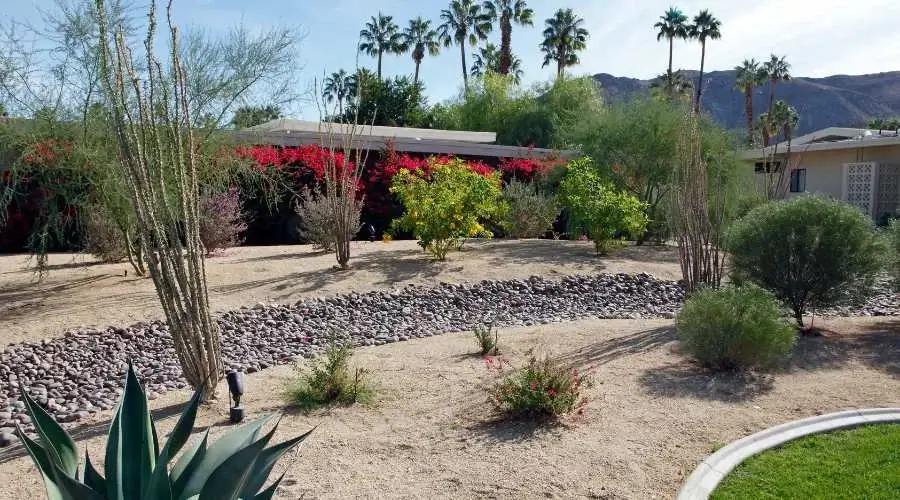At CBJ Plumbers, we believe in the importance of water conservation and promoting sustainable practices. One way to achieve this is through Xeriscaping, a landscaping technique that focuses on creating beautiful outdoor spaces while minimizing water usage. In this article, we will explore the concept of xeriscaping and its benefits, helping you transform your landscape into a water-efficient and visually appealing environment.
What is Xeriscaping?
Xeriscaping is a landscaping approach that originated in arid regions and has gained popularity worldwide. The term “xeriscape” is derived from the Greek word “xeros,” meaning dry. The main principle of xeriscaping is to design landscapes that require little to no supplemental irrigation, reducing the need for excessive water consumption. It involves careful plant selection, efficient irrigation systems, soil improvement, and appropriate maintenance practices.
Benefits of Xeriscaping
Water Conservation
One of the significant advantages of xeriscaping is its ability to conserve water. By choosing drought-tolerant plants and implementing efficient irrigation methods, xeriscaped landscapes can thrive with minimal water requirements. This not only helps preserve water resources but also reduces water bills and the need for constant watering.
Low Maintenance
Xeriscaping is known for its low-maintenance nature. By selecting native or adapted plants that are well-suited to the local climate and soil conditions, you can create a self-sustaining landscape that requires less maintenance. Xeriscaping eliminates the need for frequent mowing, watering, and fertilizing, saving you time and effort in the long run.
Environmental Benefits
Xeriscaping offers several environmental benefits. By reducing water usage, it helps alleviate the strain on local water supplies and promotes water sustainability. Additionally, xeriscaped landscapes require fewer chemical inputs, such as pesticides and fertilizers, which minimizes the impact on soil and water quality. Moreover, the use of native plants in xeriscaping supports biodiversity and provides habitat for local wildlife.
Aesthetic Appeal
Contrary to popular belief, xeriscaped landscapes can be visually stunning. With careful planning and design, xeriscaping allows you to create vibrant and diverse outdoor spaces. Native plants, succulents, ornamental grasses, and rock features can add texture, color, and interest to your landscape. By incorporating hardscaping elements such as pathways, seating areas, and artistic focal points, you can enhance the overall aesthetics of your xeriscape design.
Xeriscaping Techniques Implemention
Plant Selection
Choose plants that are well-adapted to your local climate and soil conditions. Native plants are an excellent choice as they have evolved to thrive in the region’s specific environment. Look for plants with low water requirements, drought tolerance, and resistance to pests and diseases. Consider a variety of plants to create a visually appealing landscape with different colors, textures, and heights.
Efficient Irrigation
Efficient irrigation is a key component of xeriscaping. Consider using drip irrigation systems, which deliver water directly to the plant’s root zone, minimizing water loss through evaporation. Install smart irrigation controllers that adjust watering schedules based on weather conditions and soil moisture levels. Group plants with similar water needs together to ensure efficient water distribution.
Soil Improvement
Improving soil quality is essential for xeriscaping success. Amend the soil with organic matter such as compost to enhance its water-holding capacity and drainage. Well-draining soil prevents waterlogging and root rot while allowing plants to access moisture effectively. Conduct a soil test to determine its pH level and nutrient content, and make necessary adjustments to create an optimal growing environment for your plants.
Mulching
Mulching plays a vital role in xeriscaping by conserving soil moisture, suppressing weed growth, and regulating soil temperature. Apply a layer of organic mulch around your plants to retain moisture and prevent evaporation. Organic mulch also enriches the soil as it decomposes, providing additional nutrients to support plant growth.
Trust CBJ Plumbers for Your Xeriscaping Needs
At CBJ Plumbers, we are dedicated to helping you create sustainable and water-efficient landscapes through xeriscaping. Our team of professionals has the expertise to guide you through the process, from plant selection to irrigation system installation. We understand the unique environmental conditions of West New York and can design a xeriscape that complements your property while conserving water and minimizing maintenance.
To learn more about our xeriscaping services and how we can assist you in transforming your landscape, visit our website at www.westnewyorkplumber.com. Contact CBJ Plumbers today and take a step towards a greener, more water-efficient future.





